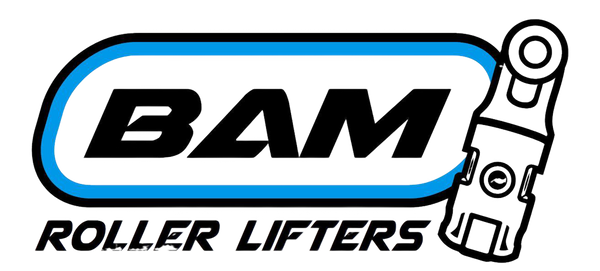FAQs
Q: What type of lifter bearing should I choose?
A: Needle bearing lifters have been used for decades and can provide reliable, trouble-free service in the right environment. However, we advise against using needle-bearing roller lifters for street applications. We strongly recommend using bushed bearings instead of needle bearings for enhanced reliability in all situations.
Q: I have decided to purchase bushed bearing lifters. What type of bushing is best for me?
A: The BB4 copper alloy is a significant upgrade from needle bearings. A BB4 bushed roller lifter typically lasts two to three times longer than a needle roller. The wear characteristics of BB4 copper alloy can be measured and monitored using a simple dial gauge test. However, a BB4 lifter must be rebuilt once the bush wears excessively. In contrast, BB1 tool steel bushes with a DLC coating do not wear like BB4 copper alloy, providing a longer service life. It is important to disassemble BB1 bushed lifters as part of a maintenance program to inspect the condition of the DLC coating. Any compromise to the DLC-coated bushes will likely result in roller wheel and cam lobe damage, often with little to no warning.
Q: Can BAM Roller Lifters be serviced/ rebuilt?
A: SRI Performance can service and rebuild the roller bearings on any BAM lifter. We are the only company in the USA offering this service exclusively for BAM brand lifters.
Q: Do BAM roller lifters need to be lubricated before installing in my engine?
A: BAM needle bearings are pre-packed with break-in grease from the factory and do not require any additional oiling. In contrast, BB4 and BB1 bushed bearings are assembled dry and must be soaked in oil before being installed in your engine. If the lifters need to be cleaned with a solvent prior to installation, it is advisable to soak them in oil prior to installing.
Q: How long will BAM bushed roller lifters last in my engine?
A: Estimating this is impossible; there are too many variables as all engines differ in their build specs and usage. Good filtration and regular oil changes will give lifters the best chance for a long service life.
Q: Is there a particular type of oil I should run in my engine?
A: We do not endorse any specific oil brand or blend. Always use reputable racing oils; we do not recommend inexpensive "supermarket" oils or oils intended for domestic engines.
Q: I am replacing another brand with BAM Roller Lifters. Will my pushrod length fit?
A: Our catalog indicates the pushrod cup height for all the lifters, measured over a Ø5/16” (Ø0.312”) gauge ball. This height is determined by measuring from the bottom of the roller wheel to the top of the gauge ball resting in the pushrod cup of the lifter. When comparing with other brands, it is important to consider how they measure their cup height, as some may not use the gauge ball method.
Q: I have seen lifters modified with grooves to increase pushrod oiling. Do I need to do this?
A: Lifters with the correct bore clearance usually do not require this modification. When assembling the engine, priming the oiling system is an effective way to gauge how quickly oil reaches the rockers. If it's determined that the modification is necessary, we recommend using a milling machine for the process. A flat cut of as little as 0.002 inches between the oil band and the pushrod oiling port is typically sufficient. However, caution is advised; cutting too deep can lead to excessive oil flowing into the rocker covers.
Q: Should I run oil restrictors to the lifter oil galleries?
A: We do not recommend making any modifications that impede oil flow to the lifters. Such modifications could reduce oil flow to the lifter axle oilers, which provide lubrication to the roller bearings and bushings. BAM’s “Edge Orifice” pushrod oiling system is designed to prevent over-oiling of the rockers and pushrods, provided that the clearance in the lifter bores is correct. During engine assembly, it is essential to check the communication between the lifter oil band and the oil gallery throughout the lift cycle. Achieving near-complete oil gallery communication is ideal.



